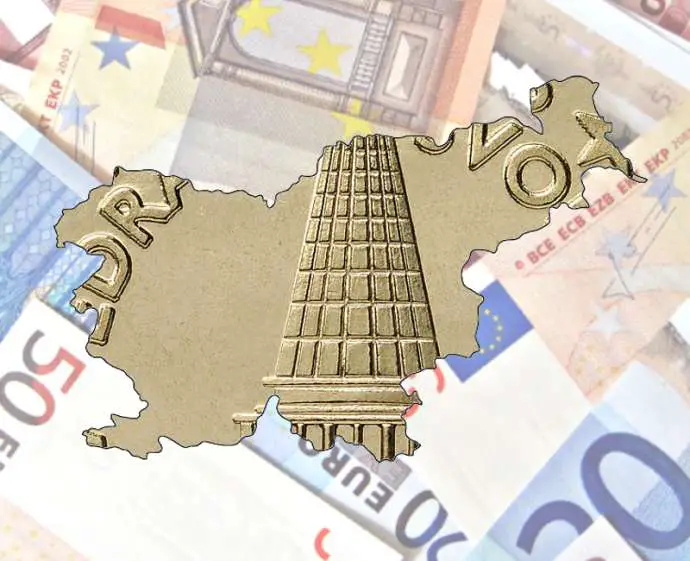STA, 30 August 2019 - Slovenia's economy expanded at an annual rate of 2.5% in the second quarter of the year in real terms, or by 2.6% when adjusted for season and working days. Both figures indicate a slow-down compared to the previous quarter.
The seasonally-adjusted quarter-on-quarter GDP growth ran at 0.2%, data released by the Statistics Office show. This too is a 0.4 percentage-point slow-down compared to the first quarter.
Revised data put the annual growth rate for the first quarter at 3.3% in real terms, 0.1 of a percentage point up from the previous estimate.
Seasonally adjusted annual growth in the second quarter was 0.9 percentage points slower than in the first quarter.
The Statistics Office noted the strong growth in exports and imports in the second quarter.
However, since imports grew at a faster pace than exports, this had a negative impact on GDP growth of 1.3 percentage points.
Addressing reporters in Ljubljana, Romana Korenič from the Statistics Office said that a slow-down was observed in all sectors, but she was not surprised by the 0.2% quarterly growth.
"I was much surprised by the strong external demand considering the situation in the European markets. Given the data in our trading partners I expected even slower pace of growth. Exports are extremely important for Slovenia," she said.
She added that exports were driven by industrial expenditure, whose growth in the second quarter outpaced that in the quarter before.
Exports increased by 9.4% and imports by 12.3%, the highest rates in a year and a half.
Domestic expenditure increased by 4.2% in the second quarter of 2019 due to stronger final consumption expenditure (+2.7%) and gross capital formation (3.5%).
The pace of growth was 1.5 percentage points faster than in the first quarter, but still 0.8 percentage points lower than the final quarter of 2018.
Household final consumption increased by 3.4%, 1.1 percentage points stronger growth than in the previous quarter, but 0.2 points slower than the quarter before.
Final government consumption expenditure increased by 1%, which is significantly less than in the previous quarters.
Gross capital formation expanded by 9.2%, with gross fixed capital formation increasing by 6.9%, which is a 3.1 percentage-point slow-down compared to the first quarter.
The increase in gross fixed capital formation was more prominent in construction (13.4%), while the increase in machinery and equipment (1.3%) was considerably lower than in the previous quarters.
After more than four years of continuous growth, gross fixed capital formation in transport equipment (mainly vehicles) decreased by 6.2%, while gross fixed capital formation in other machinery and equipment increased by 4%, a slow-down after more than two years of double-digit growth.
Changes in inventories had a positive impact on GDP growth; this time they contributed 0.6 of a percentage point.
The total number of people in employment in the second quarter of 2019 was 1,043,907, an increase of 2.6% y/y. Most new jobs were created in manufacturing, construction, transport, trade, and professional, scientific and technical activities.
The data will be an important indicator for the government economic forecaster IMAD, which will release its autumn forecast in the second half of September. It currently projects a 3.4% growth for this year.
IMAD noted that the annual rate of growth in the first half of the year was 2.9% in real terms, which means that despite the slow-down the rate remains high above EU average, seasonally adjusted at 1.3%.
IMAD also noted expanding domestic consumption, in particular household consumption, as the biggest contribution to growth.
"The growth in private consumption is rising even faster than we expected in spring, which we attribute to favourable trends in the labour market, the continuing high level of consumer confidence, as well as reduction of the tax burden on earnings," IMAD director Maja Bednaš commented.
The slow-down in investment in equipment and machinery is linked to a moderate growth in foreign demand, with IMAD noting that export orders have been slowing down since the second half of 2018.
This has not reflected in export growth yet because the slow-down in the international environment has been offset by accelerated exports in some product groups, such as pharmaceutical or medical products.
Pointing to dampened consumer and business confidence in Slovenia and the EU, coupled with the increased uncertainty and risks in the international environment, IMAD expects the outlook for the export economy to deteriorate later in the year.
"For next year, all international institutions project a slightly higher growth again for our leading trading partners, which we will take into consideration in the IMAD autumn forecast," Bednaš said.
Similarly, the central bank noted that the slow-down in Slovenia was due to the slow-down in the euro economy, while projecting slower rates of growth to continue for the same reason until the end of the year.
"Growth is still driven mainly by growth in merchandise exports and value added in industry, which has even been boosted compared to the first quarter," said Banka Slovenije.
The central bank also noted that the economic slow-down is already being reflected in the labour market with a slight slowdown in the growth in total employment and the nominal growth in average pay falling below 4% in May and June.
The Statistics Office also revised data for GDP growth in 2018, to 4.1% in real terms, which is a 0.4-percentage point downgrade from the February estimate, and a 0.7-percentage point drop from 2017.
GDP at current prices in 2018 amounted to EUR 45.755 billion, a 6.4% growth compared to 2017.






